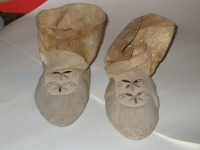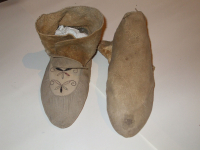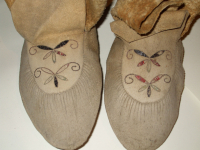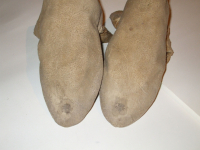mocassins
mocassins
mocassins
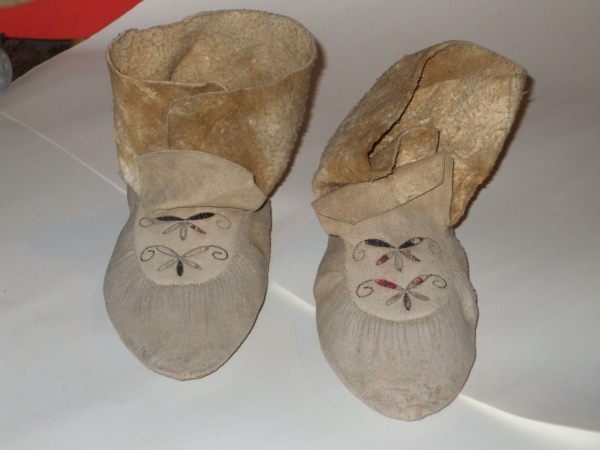
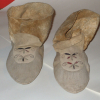
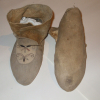
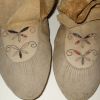

A pair of U-vamp, wrap-around moccasins decorated with a quilled double curve motif. Collected by G.C. Beltrami in Wisconsin in 1823. Around 1856, Beltrami's nephew donated several objects, including this one, to the Civic Library of Bergamo. Later the collection was transferred to the Museo Civico di Scienze Naturali, its current location.
According to Tanner (1987), "The Wisconsin region, a part of Michigan Territory in 1830, retained its characteristic population of four major Indian tribes, Winnebago [Ho-Chunk], Menominee, Ojibwa [Anishinaabe], and Potawatomi, as well as a small number of French and Métis." (p.143)
Museum documentation.
Read More About This Relative
animal hide; sinew; thread, cotton; porcupine quills, natural and dyed red, black.
Wrap around style moccasins with U-shaped vamps and puckering. A quilled design decorates each vamp.
A symmetrical five-lobed design with a double curve motif decorates each vamp.
As Vigorelli states:" questo tipo di mocassino (suola morbida, inserto ad U decorato applicato sulla tomaia, falde laterali) era comune fra i gruppi indiani del Northeast. Risulta quaindi difficile una sua esatta attribuzione. Se fosse stato prodotto dai santee Sioux, cosa non dimostrabile, sarebbe l''esempio piu" antico conosciuto di uso da parte loro del motivo a doppia curva". (p. 60)
[This type of moccasin (soft soles, decorated insert U applied to the upper side flaps) was common among Indian groups of the Northeast. It appears difficult to identify the exact allocation. If it had been produced by the Santee Sioux, which is not certified, they would be the oldest known example of an item decorated with the double curve motif.]
Provenance
Collected by G.C. Beltrami from Wisconsin in 1823. Beltrami's collection catalogue states that around 1856, Beltrami's nephew donated several objects to the Civic Library of Bergamo, and later transferred to the Museo Civico di Scienze Naturali.
The Beltrami Collection was exhibited in Florence in 1929 during the "Prima Esposizione Nazionale di Storia delle Scienze" (First National Exposition of History of Sciences"). In 1973, during a celebration of the Beltrami exhibit, Glauco Luchetti donated three objects from his own collection, which were located in Beltrami's last house in Filottrano, to the "Museo Civico E. Caffi". In 1987 the collection was used in the exhibit entitled "Missisippi 1823. Oggetti indiani raccolti da G. Costantino Beltrami" in the Galleria Lorenzelli in Bergamo.
Beltrami's Collection Catalogue, p. 60.
Leonardo Vigorelli, Gli Oggetti indiani raccolti da G.Costantino Beltrami, Civico Museo E. Caffi, Bergamo, 1987.
About This GRASAC Record
This record was created by Emanuela Rossi after a trip funded by GRASAC to the Museo Civico E. Caffi in Bergamo, Italy in October 2008.
Researchers present: Emanuela Rossi.













In the Beltrami Collection Catalogue, the author, Leonardo Vigorelli, defines "Upper Mississippi" the Cultural Area of Origin. He defines "Northeast" as the Geographic Area.
 Knowledge Sharing Platform
Knowledge Sharing Platform

